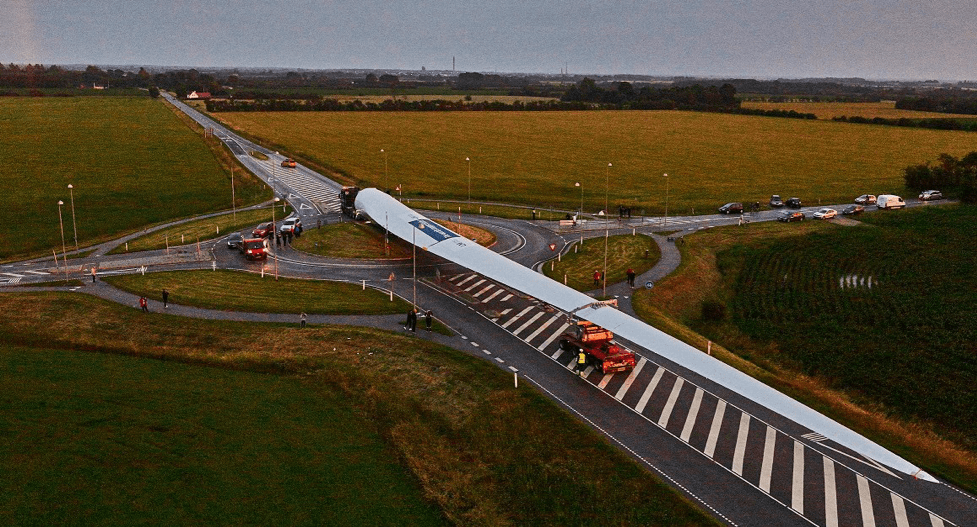When we are defining a project cargo, we are tapping into defining the nature of the cargo and a whole set of new ideas, out of the box solutions, and creativity, put into action during it’s international transportation from a production facility to its final destination, such as its home.
The nature of the cargo is defined according to the answer of one question: during its international transportation, can the load be put in an existing 20’, 40’, 40HC, or 45HC flatrack or open top container, or not.
When the answer is no, the load is considered as project cargo, which means that due to its dimensions or weight, or both the dimensions and weight of the merchandise, the cargo exceeds the capacity of a container. Therefore, it must be transported as bulk, meaning, as-is.
To give an example, below is one of the wind blades within a wind turbine. It is 290 ft. long and 13 ft. wide. To understand its dimensions, let’s compare it with the wingspan of the world’s largest airplane, the Airbus 380. It is 261 ft.

Why do we call it a “project” cargo?
First, the main reason is that when you have a cargo like in the above example, it requires special modes of transportation, uniquely designed to accommodate its safety requirements, and provide operation efficiency.
Below, there are trucks carrying wind turbine blades on the top of a mountain. If the road to the final destination was flat, flat bed trucks would be used. Still, think what the length of the flat bed truck would be. In this case, since the road to the mountain is curvy, a unique way of transportation is in place.

Secondly, before the merchandise leaves the factory, road surveys are executed. Is the road wide enough for the cargo? Are there any bridges on the way? Can the bridge carry the weight of the cargo? Will there be an operation to widen the road, such as changing the location of power poles? All these questions are answered during the road survey.
Finally, road permits need to be issued by the state, or states, depending on the route.




